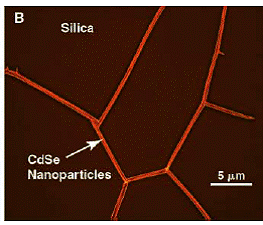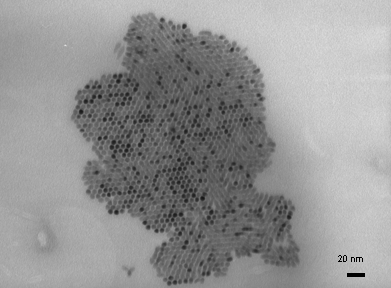Self-Healing
Multilayer composites, which combine ductile polymers with brittle films, constitute vital components for optical communications, microelectronics and bio-engineering applications. However, since crack formation is a critical problem in these materials, designing layered systems that can respond to environmental changes and effect self-healing is particularly important for a range of technologies. Here, nanoparticles dispersed in a polymer matrix were found to migrate to a crack generated at the interface between the polymer and a glassy layer. Segregation of the nanoparticles to the crack depended on both the enthalpic and entropic interactions between the polymer and nanoparticles. In particular, poly(ethylene oxide)-covered 5.2-nm spherical nanoparticles in a poly(methyl methacrylate) matrix diffused to cracks in the adjoining silicon oxide layer, whereas tri-n-octylphosphine oxide-covered nanoparticles did not. These results point to a simple means of fabricating systems that can either self-heal, improving the durability of multilayered systems, or form the basis for auto-responsive materials.
  |
Self-Corralling
In the last few decades, a lot of research has been done on phase separation of polymers, be they homo-polymer blends or diblock copolymers. The polymers phase separate because of a mismatch in the Flory-Huggins parameter of the two polymers. The progress in understanding and controlling phase separation processes has led to a bottom-up approach in synthesizing new functional materials. This approach has been further advanced and applied to phase separation of inorganic nanorods in polymer matrices. The interaction between polymers and nanorods is governed by the nature of the ligands attached to nanorods. When nanorods are functionalized with ligands having unfavorable interactions with polymers, and an electric field is applied while drop casting, normally oriented nanorods in a polymer matrix are observed. This is shown in the following TEM micrograph. This phase separation of nanorods is termed "self-corralling". The process of self-corralling can be directed by using chemically patterned substrate where nanorods, by preference, go on one part of the pattern, and polymer goes to the other. Further, by self-corralling nanorods functionalized with photoactive ligands, efficient photovoltaic devices can be foreseen.
 |
